 |  |
| |  |
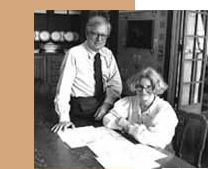 | Robert Venturi
Robert Charles Venturi Jr. is one of the founding five of postmodernism in American Architecture. He is the founding member of his firm Scott Brown and Associates along with his wife Denise Scott Brown. This husband and wife team is regarded as being one of the two most influential architects in this century not only through theory but also through practice. Both are teachers,
planners and designers who |  |
| | | have made a big impact on modern design.
Venturi was awarded the Pritzker Prize in Architecture in 1991. He is also known for coining the maxim "Less is a bore" as an impertinent response to Mies van der Rohe's famous modernist dictum "Less is more"
|  |
 |  |
Venturi attended school at the Episcopal Academy in Merion, Pennsylvania. He graduated summa cum laude with his M.F.A from Princeton University in1950. In 1951 he
| 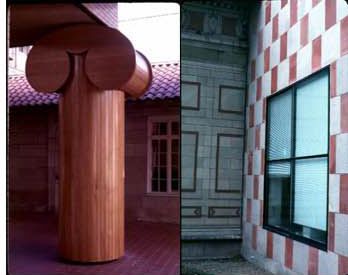 |  |
briefly worked under Eero Saarinen in Bloomfield Hills, Michigan, and later for Louis Kahn in Philadelphia. He was awarded the Rome Prize Fellowship at the American Academy in Rome in 1954, where he studied and toured Europe for two very important years. It was during this time that he was heavily influenced by the European architecture that would become an important influence in his later postmodern designs. |  |
| |  |
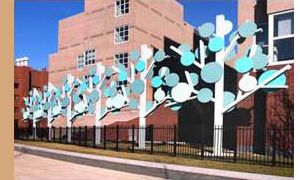 |
Venturi is known as much for his contemporary furniture and product design as he is his furniture. Over a period of more than five years, beginning in the late 1970s, Robert Venturi designed his first postmodern examples of furniture for the Knoll company. This furniture was laminate and wood parodies of familiar styles that could be found throughout history including Chippendale, Queen Anne, Empire, Hepplewhite, Sheraton, |  |
| | | Biedermeier, Gothic Revival, Art Nouveau, and Art Deco. This series of contemporary furniture was known as the Out of the Ordinary series and even included design references to chairs and tables from ancient Egypt.
Venturi also designed highly unusual dishware for the company Alessi including pear shaped tea pots, star shaped dinner trays and unusual cuckoo clocks. These objects too were simultaneous homages and distressings of familiar styles from history.
|  |
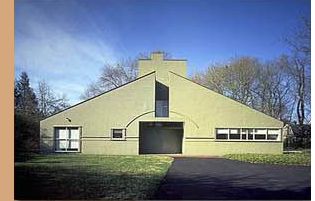 | When it comes to architecture, Venturi was a great theorist who was a critic of the purely functional and spare designs that were associated with modernists such as Corbusier. His criticism of this movement, which was considered counterrevolutionary at the time was published in his famous manifesto called," Complexity and Contradiction in Architecture.” In 1972, with Denise Scott |  |
| | | Brown and Steven Izenour, Venturi composed another important document called “Learning from Las Vegas: the Forgotten Symbolism of Architectural Form” which launched new lingo into the world of post modern architecture such as “talking sheds.” |  |
 |  |
The Brant House was designed in 1972. Many of the Robert Venturi residences designed in the seventies this one had an inbuilt art gallery so art could be part of life.
| 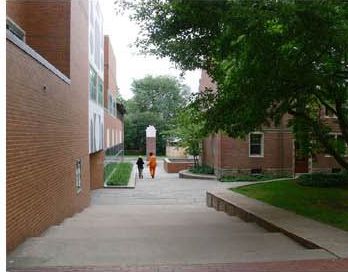 |  |
One of his famous museums is the Allen Art Museum addition in Oberlin Ohio that he designed in 1973. This is a very well known example of a postmodern façade. It is a flat Corbusier style one-story building built into the side of a hill that is dandied up with a checkerboard pattern of pink Granite and red sandstone.
These famous buildings were preceded by a home he built for his mother in Philadelphia. Known as the Vanna Venturi house it was constructed in 1959 as an experiment that would reveal the simplest components of a house. It is a simple design that consists of one long gabled roof, a central door and rows of windows that is large, majestic and referential to Roman architecture and a barn in the country at the same time.
|  |
| |  |
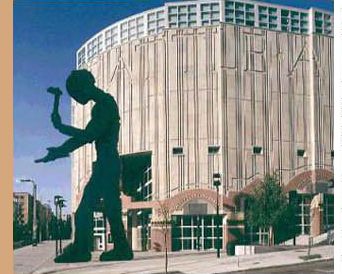 |
Today, Venturi still designs residences, hotels, museums and schools from his office in Philadelphia. Some of his famous university buildings include the Dumbarton Oaks Library at Harvard in Washington D.C., the Lewis Thomas Laboratory in Princeton University in New Jersey and the Gordon Wu Hall at Princeton. Among his famous museums are the Seattle Art Museum in Seattle Washington, the Sainsbury Wing of the National Gallery in London and the Allen Memorial Art Museum in Oberlin, Ohio. |  |
| | |  |
| | |  |
 |  |  |  |  |  |  |  |  |  | |